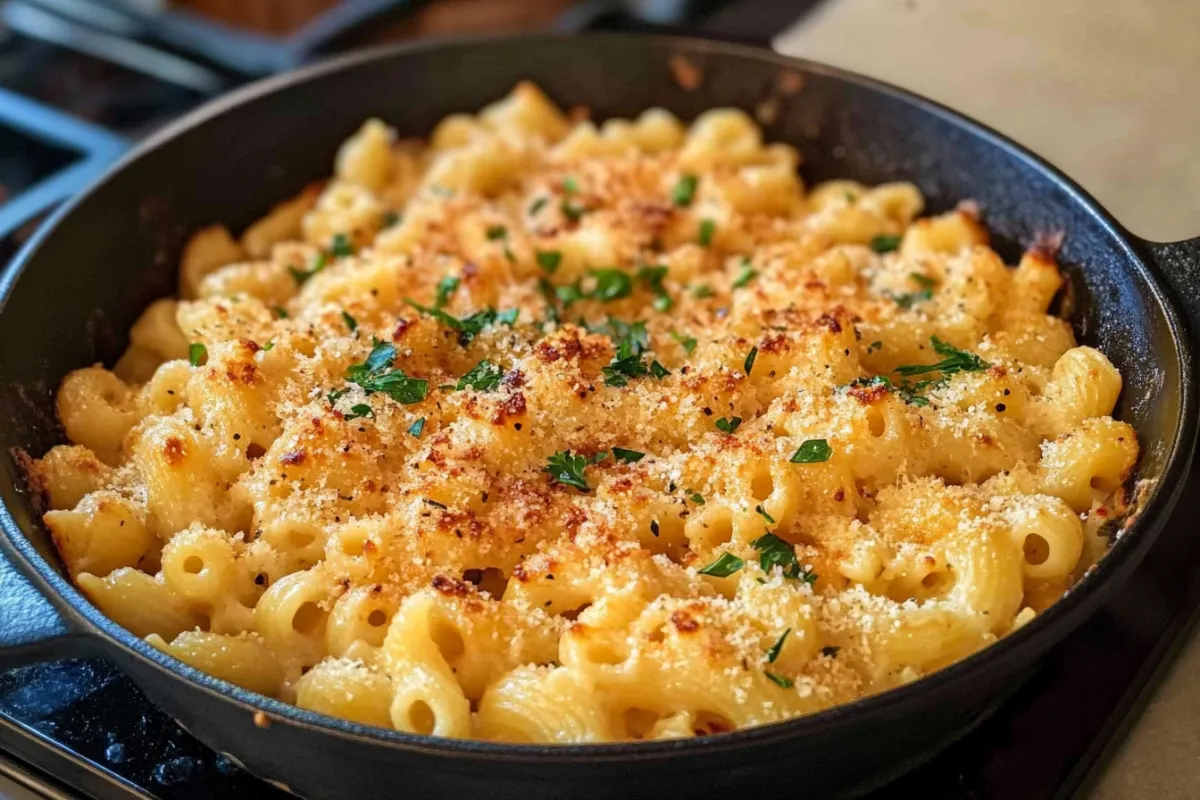Cavatappi: The Corkscrew Pasta That’s Perfect for Every Dish
Cavatappi, a versatile pasta shape, has made its way into a variety of dishes. From casual comfort foods to gourmet meals, it excels in both. Its corkscrew shape and ridged texture help it hold sauces beautifully, adding a twist to traditional pasta dishes. In this article, we’ll explore the origins, characteristics, cooking methods, and popular recipes for cavatappi. We’ll also discuss why this pasta has become a staple in both home kitchens and restaurants.
Origins and Etymology of Cavatappi
Cavatappi, meaning “corkscrew” in Italian, gets its name from its spiral shape. The word is derived from “cava” (to extract) and “tappi” (stoppers), referring to its appearance like a corkscrew used to pull out wine corks. This pasta shape is thought to have originated in southern Italy, where short pasta varieties like penne and rigatoni are popular. However, cavatappi has since gained worldwide recognition, especially in the United States.
Unlike ancient pasta shapes, cavatappi is relatively modern. It is believed to have been developed by the renowned pasta company Barilla. According to some accounts, a mistake while shaping fusilli led to the creation of cavatappi. Its unique form and texture made it an instant favorite.
While cavatappi is sometimes confused with fusilli or rotini, it stands out due to its hollow, tube-like structure. This feature makes it ideal for thicker sauces and heartier recipes. You can find more about Italian pasta varieties and their culinary uses by checking this guide.
Shape and Texture: Why Cavatappi Stands Out
Cavatappi’s unique shape and ribbed surface (rigati) give it an advantage when it comes to holding onto sauces. The ridges provide more surface area for trapping sauces, ensuring flavorful bites. Its hollow, spiral form adds texture without making the pasta too dense.
Cavatappi typically has 2-3 twists, which helps it capture sauces more effectively than other shapes. Its corkscrew shape also allows it to pair well with chunkier ingredients like vegetables, meat, or cheese. It stands out compared to similar pastas like rotini, which has a tighter spiral, or fusilli, which is flat and twisted. Cavatappi’s hollow structure makes it especially good for absorbing more sauce.
Recipes that call for sturdy pasta benefit from cavatappi’s ability to hold up during cooking. Whether it’s a baked dish or a casserole, cavatappi doesn’t turn mushy easily. This is one of the reasons it’s favored in comfort foods like mac and cheese. Its shape and texture make it perfect for baked dishes, where it stays firm yet flavorful.
For more details on short pasta shapes and their uses, visit this pasta comparison guide.
Nutritional Value of Cavatappi
Cavatappi is made primarily from durum wheat semolina, which gives it a firm texture and a rich taste when cooked. This type of flour is often enriched with B vitamins and iron, making it a good source of nutrients. Unlike egg-based pasta varieties like tagliatelle, cavatappi is traditionally egg-free, making it suitable for vegans and those with egg allergies.
A typical serving of cavatappi (about 56 grams) contains:
- Calories: 200 kcal
- Protein: 7 grams
- Carbohydrates: 42 grams
- Fat: 1 gram
- Fiber: 2 grams
Cavatappi is an excellent source of complex carbohydrates, making it a good energy booster. Its fiber content helps with digestion, especially in whole-grain varieties. With gluten-free and whole-grain alternatives available, cavatappi can cater to a variety of dietary needs.
If you’re looking for ways to include cavatappi in a balanced diet, try pairing it with nutrient-rich vegetables and lean proteins. For more on the nutritional benefits of pasta and other foods, check out this guide.
Popular Cavatappi Recipes
Cavatappi’s versatility makes it a key ingredient in many dishes. Whether it’s a simple weeknight meal or a more complex dish, cavatappi shines. Here are some of the most popular recipes:
- Cavatappi Mac and Cheese
A classic comfort dish, mac and cheese takes on a new dimension with cavatappi. Its ridged surface holds the creamy cheese sauce, ensuring each bite is flavorful. It also holds up well in baked versions, with a crisp top layer and tender inside. Many cooks add extras like breadcrumbs, bacon, or herbs to make the dish even more special. - Cavatappi Amatriciana
This traditional Italian dish combines cavatappi with a spicy tomato sauce made with guanciale (cured pork), tomatoes, and red pepper flakes. The spiral shape of the pasta captures the sauce, making it a hearty and satisfying meal. - Cavatappi Primavera
This light, fresh dish highlights seasonal vegetables like zucchini, bell peppers, and tomatoes. Tossed with olive oil, garlic, and parmesan, it brings out the best in the pasta’s ridged texture. The cavatappi shape ensures that every bite is filled with a perfect blend of vegetables and pasta. - Cavatappi with Pesto and Grilled Chicken
Pesto sauce clings beautifully to the ridges of cavatappi, while grilled chicken adds protein and flavor. This dish is great for meal prep as it can be served hot or cold as a pasta salad.
You can find more detailed recipes for dishes like Cavatappi Amatriciana here.
Cooking Tips for Cavatappi
To make the perfect cavatappi dish, you need to ensure the pasta is cooked just right. Here are some tips to get the best results:
- Boiling Water: Use a large pot with plenty of water to avoid the pasta sticking together.
- Salting the Water: Add salt to the boiling water for flavor. The pasta will absorb some of this salt, which enhances its taste.
- Cook Until Al Dente: For the best texture, cook the pasta until it is al dente—firm to the bite. This usually takes around 9-11 minutes, but it’s best to check a minute or two before the suggested time.
- No Rinsing: After draining the pasta, avoid rinsing it under cold water. Rinsing removes the starch that helps sauces stick to the pasta. Only rinse if you are making a cold pasta salad.
If you want more cooking tips to get your pasta perfect, check out this pasta cooking guide.
Cavatappi vs. Other Pasta Types
Although cavatappi may look similar to other short pastas, its structure sets it apart. Here’s how it compares to other popular pasta shapes:
- Cavatappi vs. Fusilli: Fusilli has a flat, twisted shape, while cavatappi is hollow and spiral-shaped. Fusilli works best with lighter, thinner sauces, while cavatappi is great for thicker, chunkier sauces.
- Cavatappi vs. Rotini: Rotini is also spiral-shaped but is more tightly coiled. Cavatappi’s wider, more open spiral allows it to hold more sauce, making it a better choice for dishes with rich sauces.
- Cavatappi vs. Elbow Macaroni: Often called double elbow macaroni, cavatappi’s ridged texture and spiral shape give it an advantage over traditional elbow macaroni. It holds onto cheese sauces much better, making it a great choice for mac and cheese recipes.
For more comparisons between pasta types, you can visit this guide on pasta varieties.
FAQs About Cavatappi
Here are answers to some frequently asked questions about cavatappi:
- What is the difference between cavatappi and fusilli?
Answer: Fusilli is flat and tightly coiled, while cavatappi is hollow and has a more open spiral, making it better for holding thicker sauces. - Can you use cavatappi in place of macaroni?
Answer: Yes, cavatappi works well as a substitute for macaroni. It holds sauces better and adds a fun twist to traditional mac and cheese. - What sauces go best with cavatappi?
Answer: Cavatappi pairs well with creamy sauces like alfredo or cheese sauce. It also complements hearty tomato-based sauces, pesto, and lighter olive oil-based sauces.
How to Store Cavatappi
Proper storage ensures that cavatappi stays fresh, whether it’s uncooked or cooked. Here’s how to store it:
- For Uncooked Cavatappi: Store in an airtight container in a cool, dry place. This prevents moisture absorption and keeps the pasta fresh for up to a year.
- For Cooked Cavatappi: After cooking, store the pasta in an airtight container in the fridge. It will stay fresh for 3-5 days. When reheating, add a little water or sauce to keep the pasta from drying out. You can also freeze cooked cavatappi, but it’s best to freeze it with sauce to maintain moisture.
Conclusion
Cavatappi is a versatile and flavorful pasta that can elevate any dish. Its spiral shape and ridged surface make it perfect for holding sauces, while its sturdy structure works well in both baked and stovetop dishes. Whether you’re cooking a classic mac and cheese or a fresh primavera, cavatappi is an excellent choice for pasta lovers.
For more pasta varieties and recipe ideas, explore our ultimate pasta guide here.


2 thoughts on “Cavatappi Pasta: Recipes, Cooking Tips, and Its Versatile Uses”